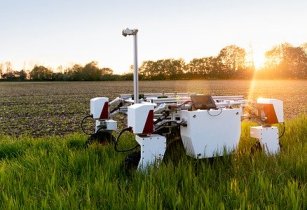Robotics and artificial intelligence (AI) will drive a deep and transformative change in the agricultural world during the coming decades, according to IDTechEx
As such, a new class of activities in agriculture are prone to automation, just as advances in power and motion technologies mechanised many agricultural tasks, or just as advances in seed and agrochemical technology removed the human from many activities.
IDTechEx Research provides an overview of the major product categories and discusses underlying technologies which are driving this change. IDTechEx Research has been examining the technologies, applications, products, and players active in agricultural robotics and AI for the past five years.
Agricultural robots: A cost-effective precision revolution
Machine vision technology is often a core competency of these robots, enabling the robots to see, identify, localise, and to take some intelligent site-specific action on individual plants. The machine vision increasingly uses deep learning algorithms often trained on expert-annotated image datasets, allowing the technology to far exceed the performance of conventional algorithms and to match or even exceed even that of expert agronomists.
The rise of autonomous robots, provided they require little remote supervision, can alter the economics of machine design, enabling the rise of smaller and slower machines. Indeed, this elimination of the driver overhead per vehicle is the basis of the swarm concept. There is clearly a large productivity gap today between current large and high-power vehicles and those composed of fleets of slow small robots. This productivity gap however can narrow as the latter has substantial room for improvement.
These robots are evolving. Many robots have already grown in size and capability, offering faster speeds, higher frame-per-seconds, more ruggedised designs, higher on-board energy for longer operation time and a heavier load, and so on. This evolution will inevitably continue, just as it did with all other agricultural tools and vehicles. We are still at the beginning. The deployed fleet sizes worldwide are small, but this is about to change.
Autonomous tractors and high-power vehicles
Level-5 or fully autonomous tractors have also been demonstrated for some years. The technical barrier here is low. The required hardware is available and the autonomous driving software challenges are relatively mild given the nature of the operational environment. As with all cases, the legislative environment is a hinderance today, but will not hold back the industry for long. The determining factors here are farmer perception and added value. In terms of the latter, the additional cost incurred in going from level-4 to level-5 does not justify the additional benefits, at least not yet. This is because level-5 does not currently enable many new possibilities. This will remain the case until more tasks, and not just movement, become automated.


